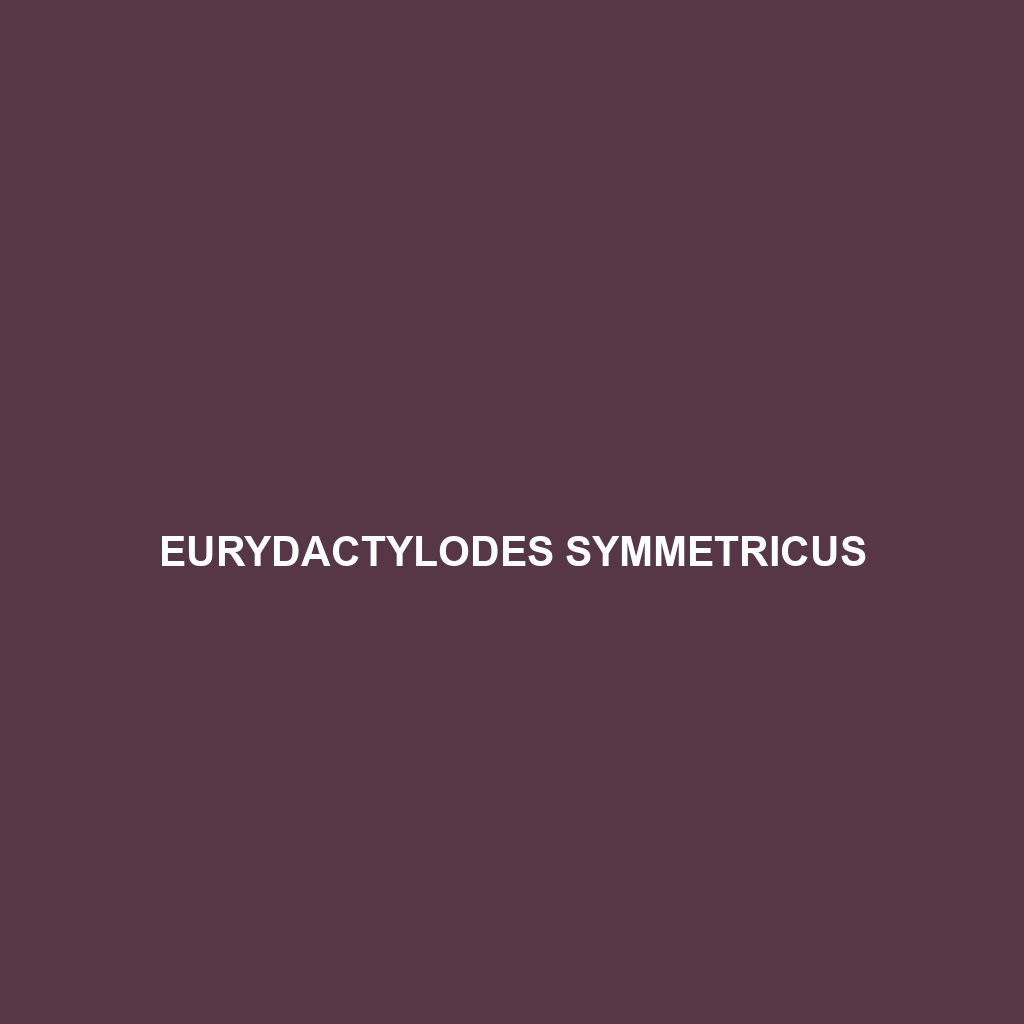Common Name
Eurydactylodes symmetricus
Scientific Name
Eurydactylodes symmetricus
Habitat
Eurydactylodes symmetricus, commonly known as the symmetric gecko, is predominantly found in the lush rainforests of New Caledonia. This species thrives in humid environments characterized by a tropical climate, where temperatures generally range from 20°C to 30°C (68°F to 86°F). The gecko prefers habitats with abundant vegetation, including vines, ferns, and tree bark, which provide both camouflage and hunting grounds. Since it is endemic to the New Caledonian archipelago, the symmetric gecko’s survival is closely tied to the health of its forest ecosystem, making it susceptible to habitat destruction and climate change.
Physical Characteristics
The Eurydactylodes symmetricus exhibits distinctive physical features that contribute to its identification. Adult geckos typically measure between 7 to 10 cm (2.7 to 3.9 inches) in length, showcasing a slender body with a slightly elongated tail. Their skin is primarily a muted brown or gray, adorned with unique patterns that resemble lichen or tree bark, providing excellent camouflage. The tail is notably prehensile, allowing the gecko to grasp onto branches and other surfaces adeptly. Its large, bulging eyes are well-adapted for low light conditions, highlighting its nocturnal behavior.
Behavior
This species is primarily nocturnal, exhibiting most of its activities during the night. Eurydactylodes symmetricus showcases intriguing social interactions, often found basking in groups or near each other during the night. Mating rituals are complex and can involve physical displays, vocalizations, and intricate dances. These geckos tend to be territorial, especially during the mating season, when males will display aggression towards each other to establish dominance over a specific area. Their ability to climb and navigate varying terrains is fascinating, making use of their prehensile tails and specialized toe pads for dexterity.
Diet
Eurydactylodes symmetricus is primarily an insectivore, feeding on a diet that consists mainly of small insects and arthropods, including ants, beetles, and moths. Their hunting technique involves ambushing prey from a concealed position—often remaining motionless until the right moment. Occasionally, they may consume nectar and fruits, showcasing some omnivorous tendencies. The gecko’s diet is not only crucial for its survival but also helps in maintaining the ecological balance by controlling insect populations in their native habitats.
Reproduction
The reproductive cycle of Eurydactylodes symmetricus is influenced by environmental conditions. Mating typically occurs during the warmer months, coinciding with the rainfall season, which ensures better survival rates for the offspring. After mating, females lay clutches of 1 to 3 eggs, which are usually hidden in the leaf litter or under fallen logs to protect them from predators. The gestation period lasts approximately 6 to 8 weeks before the eggs hatch into miniature versions of the adults. Parental care is minimal, with the hatchlings being independent from birth, though their survival relies on their environmental adaptation.
Conservation Status
As of the latest assessments, Eurydactylodes symmetricus is classified as vulnerable due to habitat loss primarily caused by deforestation and land development in New Caledonia. The introduction of invasive species and climate change further threaten its survival. Conservation efforts are underway, focusing on habitat preservation and restoration to support populations in their natural environments. Organizations are working to create protected areas and enhance awareness regarding the importance of maintaining biodiversity within the rainforest ecosystem.
Interesting Facts
One fascinating aspect of Eurydactylodes symmetricus is its ability to change color slightly based on its environment, enhancing its camouflage abilities significantly. Unlike many other reptiles, this gecko can also mimic the appearance of tree bark, which adds a layer of protection against predators. Moreover, they possess a unique adhesive ability in their toe pads, allowing them to retain a strong grip on vertical surfaces—even when the ground is slippery.
Role in Ecosystem
Eurydactylodes symmetricus plays a vital ecological role within its rainforest habitat. As a predator, it helps control insect populations, contributing to the overall health of the ecosystem. Additionally, their feeding on nectar can facilitate pollination for various plant species, highlighting their role as essential contributors to biodiversity. The presence of this gecko also indicates the health of the rainforest ecosystem, as its well-being is tied to the stability of its habitat.
This description is structured to be informative and optimized for search engines while providing detailed insights about the species. Adjustments can be made to specific sections according to additional research or target keywords as needed.
